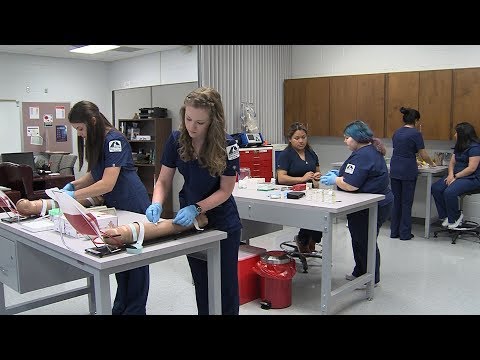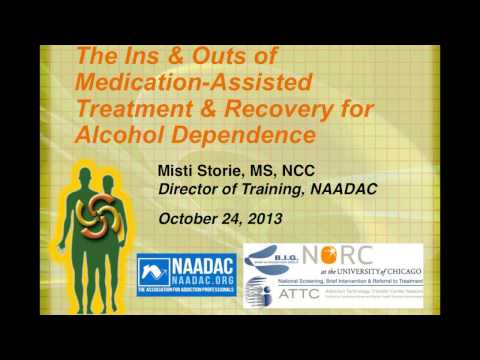How to Get Certified as a Medical Assistant
Contents
In order to get certified as a medical assistant you will need to complete an accredited program and pass an exam. Find out how to get started.
Checkout this video:
Introduction
Medical assistants are in high demand. They perform many duties, including taking medical histories and recording vital signs, explaining treatment procedures to patients, scheduling appointments, and handling billing and insurance paperwork.
If you’re interested in a career as a medical assistant you’ll need to get certified. Certification for Medical Assistants is not required in all states, but many employers prefer to hire those who have it. The certification process typically involves completing an accredited education program and passing an exam.
Once you’re certified, you’ll need to stay up-to-date on your education and training. Many employers require medical assistants to complete continuing education courses on a regular basis.
If you’re ready to start your career as a medical assistant read on for more information on how to get certified.
What is a medical assistant?
A medical assistant is a patient care technician who performs routine administrative and clinical tasks to keep the offices of physicians and other health practitioners running smoothly. Medical assistants take on responsibilities in both the administrative and clinical areas of healthcare. In the front office, they might schedule appointments, take medical histories, handle billing, or do transcription. In the back office or clinics, they might prepare patients for examination, measure vital signs, remove sutures, or give injections.
Medical assistants typically have an associate degree from a community college or a certificate from a vocational school. Some states require certification for medical assistants. Certification may be available through professional organizations such as the American Association of Medical Assistants and the National Healthcare Association.
Duties of a medical assistant
The duties of a medical assistant are both clinical and administrative in nature. They may include but are not limited to assisting the physician with patient exams, taking and recording vital signs,STEREOBOTH drawing blood, administering injections and performing minor office surgeries. Medical assistants may also be responsible for scheduling appointments, handling billing and coding, handling insurance paperwork and other administrative tasks.
Education and training
Medical assistants can find employment in a number of healthcare settings, including hospitals, clinics, physician’s offices, and even insurance companies. Duties vary depending on the size and type of facility, but can include clerical work, taking medical histories and performing basic laboratory tests. Many medical assistants are also responsible for scheduling appointments and assisting patients in understanding their insurance coverage.
While there is no formal education requirement to become a medical assistant, most employers prefer to hire candidates who have completed an accredited training program. These programs typically last between six and twelve months and result in a certificate or diploma. Some community colleges offer two-year associate degree programs in medical assisting, but these are not as common.
Most employers also require medical assistants to be certified. Certification is not required in all states, but it is a good way to show potential employers that you have the knowledge and skills necessary to perform the job. There are several different organizations that offer certification for medical assistants, including the American Association of Medical Assistants (AAMA) and the National Healthcare Association (NHA).
Certification
Certification is the medical assistant’s voluntary confirmation of his or her qualifications. Once certified, a medical assistant can use the credential “CMA” (Certified Medical Assistant). To be eligible for certification, an applicant must have graduated from a medical assisting program accredited by either the Commission on Accreditation of Allied Health Programs (CAAHEP) or the Accrediting Bureau of Health Education Schools (ABHES). In addition, an applicant must pass a certification exam administered by either the Certifying Board of the American Association of Medical Assistants (AAMA) or the American Medical Technologists (AMT).
Salary and job outlook
The median annual wage for medical assistants was $33,610 in May 2017. The median wage is the wage at which half the workers in an occupation earned more than that amount and half earned less. The lowest 10 percent earned less than $24,280, and the highest 10 percent earned more than $47,860.
In May 2017, the median annual wages for medical assistants in the top industries in which they worked were as follows:
Offices of physicians$34,800
Outpatient care centers33,700
General medical and surgical hospitals32,670
Offices of other health practitioners31,950
Employment of medical assistants is projected to grow 29 percent from 2016 to 2026, much faster than the average for all occupations. An aging population and a greater emphasis on preventive care are expected to lead to increased demand for healthcare services. As a result, providers will need additional support from medical assistants.
Steps to becoming a medical assistant
Medical assistants perform administrative and clinical tasks to support the work of physicians and other health professionals. They typically work in outpatient care centers, clinics, physician offices, and other healthcare facilities. If you’re interested in becoming a medical assistant, here are a few steps you can take:
1. Complete a medical assistant training program.
2. Obtain certification through an accredited organization, such as the American Association of Medical Assistants (AAMA).
3. Pass a state-specific exam, if required.
4. Maintain certification through continuing education and recertification every two years.
Medical assistant certification process
The medical assistant certification process is not as difficult as one might think. There are a number of ways to become certified, and the process can be completed in a relatively short amount of time.
The first step is to choose the type of certification you want to obtain. There are two main types of certification for medical assistants: the Certified Medical Assistant (CMA) and the Registered Medical Assistant (RMA). Both types of certification are equally valid and recognized by employers. However, each type of certification has its own set of requirements that must be met before you can take the exam.
Once you have chosen the type of certification you want to pursue, you will need to complete an accredited medical assistant program. These programs are typically offered at community colleges and vocational schools. They can also be found online, although it is important to make sure that the program you choose is accredited by either the Commission on Accreditation of Allied Health Education Programs (CAAHEP) or the Accrediting Bureau of Health Education Schools (ABHES).
After completing an accredited medical assistant program, you will then need to take and pass a certifying exam in order to become certified. The CMA exam is offered by the American Association of Medical Assistants (AAMA), while the RMA exam is offered by the American Medical Technologists (AMT). Once you have passed one of these exams, you will be officially certified and able to work as a medical assistant.
Renewing your medical assistant certification
Renewing your medical assistant certification Every few years, medical assistants must renew their certification. Depending on the organization that granted your initial certification, the process of renewing may vary. Generally, though, you will need to complete a certain number of continuing education credits and/or retake the credentialing exam. Some organizations may require both.
The specific requirements for renewing your medical assistant certification can be found on the website of the organization that granted your credential. For example, if you earned your certification through the American Association of Medical Assistants (AAMA), you can find information on renewing your credential here. The process outlined on this page includes completing 60 hours of continuing education every three years and/or retaking the credentialing exam every six years.
Similarly, if you earned your certification through the National Healthcare Association (NHA), you can find information on renewing your credential here. The process listed includes completing 10 contact hours of continuing education every year and/or retaking the credentialing exam every three years.
Whatever the specific requirements, it is important to keep up with your annual continuing education credits and mark your calendar for when you need to retake the credentialing exam. That way, you can be sure to keep your medical assistant certification up-to-date and maintain a high level of competency in your field.
Medical assistant certification benefits
There are many benefits to becoming certified as a medical assistant. Certification demonstrates your commitment to your career, and can give you a competitive edge when applying for jobs. In some states, certification may even be required in order to practice.
Becoming certified also shows employers that you have the knowledge and skills necessary to perform the job effectively. And, because certification is an ongoing process, it helps you keep up with the latest advances in medical assisting.
There are two main types of certification for medical assistants: the Certified Medical Assistant (CMA) designation from the American Association of Medical Assistants (AAMA), and the Registered Medical Assistant (RMA) designation from the American Medical Technologists (AMT). Both credentialing organizations require passing an exam as well as meeting certain educational and experience requirements.







